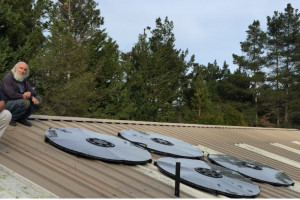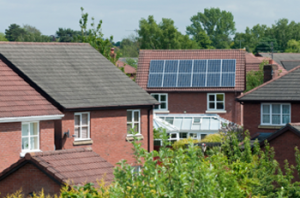
Way back in 1978, I (Larry) installed my first solar water heating system. I continued with solar thermal, installing new domestic hot water (DHW), space, and pool heatin...

In recent years, solar panels have improved to the point that the technology is now available to consumers at more-affordable prices and with improved levels of efficiency. The two options available in solar technology are thermal panels, which are used to heat your home’s hot water, and PV panels, which supply your home with electricity. However, the time at which solar panels perform to their maximum is not so clear cut.
To begin with, there are several factors that affect how much energy solar panels can generate, and this will have an impact on your decision to invest in this source of renewable energy. Generally, the roof where the solar panels are placed should face a southerly direction and be angled at around 30 degrees. Moreover, there should be no shading from other buildings or nearby vegetation and your house needs to have suitable insulation for best return on investment. So, we can see that solar-panel energy production is not only about the time of day.
Firstly, the weather does not need to be constant sunshine for solar panels to produce energy. The technology is capable of working in cloudy conditions and does not only generate energy during the middle part of the day. This is because solar panels absorb light from the sun. The increased brightness of the light will lead to more energy being produced, with optimum, energy-producing clear light being common during the early hours.
There is something known as the “edge-of-cloud” effect that means that solar panels often emit more energy when the weather is cloudy. This is because a magnification of the sun’s rays occurs when clouds pass over it, an effect that can also result from sunlight being reflected off water or snow. This can temporarily boost the energy being produced by the panels, making cloudy days nothing to worry about.
There is sunlight throughout the year, even during winter, and as said earlier, solar-panel energy production is about sunlight and not heat. Of course, a factor that will play a part during the winter months is the shortened length of the days. Maximum energy production will generally be from June to August, when hours of the day are longer, but the supply of sunlight during winter months will mean that solar panels are still functioning.
Due to the roundness of the earth, the sun strikes the surface of the planet at different angles. The sun’s rays when at a vertical angle give the earth’s surface maximum energy, but when the sun’s rays are slanted, this makes the travel of light scattered. The closer the earth is to the sun, the more solar energy produced, this being the case in the summer for the southern hemisphere and in the winter for the northern hemisphere. For example, the US receives more solar energy in the summer as the sun is nearly overhead.
As long as you have had your solar panels placed at a suitable angle and facing the right way, you can actually expect the optimum time for energy production to be the morning. Though, this will ultimately depend on various factors, and the morning effect can only last for so many hours. During the middle part of the day you can also expect a slight increase in the amount of energy being produced. However, in terms of the energy being produced by solar panels, it is more about the cumulative build-up of energy and not specific peaks during the day.

Way back in 1978, I (Larry) installed my first solar water heating system. I continued with solar thermal, installing new domestic hot water (DHW), space, and pool heatin...
In response to a person on the Wall who asked, "Can I add antifreeze to my heating system?" Brad White replies: Antifreeze is commonly done but like anything else, you ha...

Q: What is the difference between solar thermal and solar photovoltaic (PV)? A: Solar thermal panels heat water. Photovoltaic panels convert sunlight to electricity.